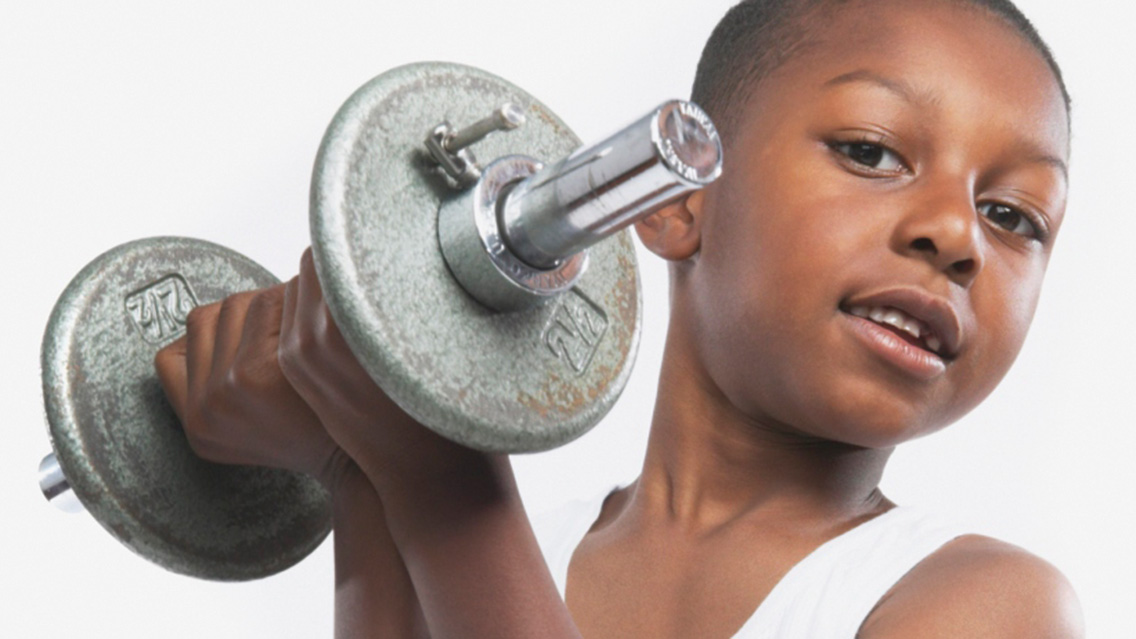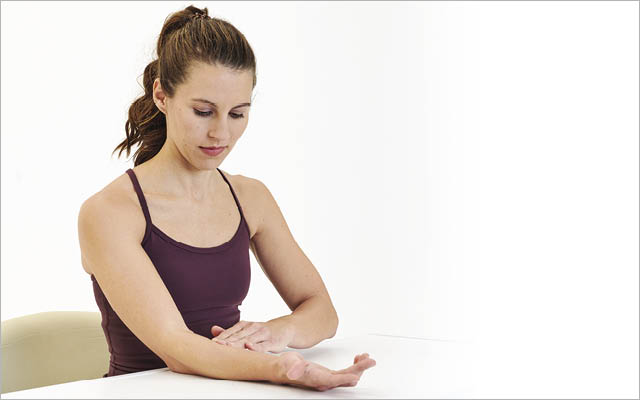Q1: When is it safe for a child to start lifting weights? My son is 10 and wants to know when he can begin.
A: Weight training at a young age is not nearly the safety concern it’s made out to be, according to Brian Grasso, founder and CEO of the International Youth Conditioning Association (www.iyca.org). “Parents often worry that strength training will damage growth plates and stunt height development,” he says, “but consider that running and jumping create significantly more ground reactive force than lifting a weight ever could.”
Solid technique is crucial from a safety perspective, though. “Priority No. 1 of any coach, parent or trainer working with youngsters should be teaching them how to produce force with proper form,” says Grasso. As with adults, technique should be perfected before any sort of external load is added. Just as you crawl before you walk, body-weight-only movements should come first: Think squats, lunges, pushups, pull-ups and burpees. Grasso recommends making the transition from unweighted to weighted exercises around age 9 (but even then, only about 20 percent of the time; the rest should be body weight only).
Just don’t try to substitute machinery for quality instruction. “Contrary to popular belief, using static machines instead of free weights doesn’t lessen the chance of injury,” says Grasso. “Machines can’t quite duplicate the same functional movements, and squatting and jumping are cornerstones to athletic activities and injury prevention.”
Q2: What foods, herbs or vitamins can I eat or take to decrease joint pain? I’d rather avoid NSAIDs like ibuprofen and aspirin.
A: I’m not a big fan of NSAIDs, either: nasty stuff with adverse effects such as gut and kidney damage. Luckily, there are plenty of health-promoting options that ease swelling. “Healthy fats are anti-inflammatory, especially the polyunsaturated fats that can be found in cold-water fish — salmon, cod and anchovies, for example — and raw nuts such as walnuts, almonds, and seeds like pumpkin and sunflower,” says Marie Winters, ND, a naturopathic physician at Two Rivers Naturopathy in Philadelphia. “Thai basil, rosemary and the spices in curries (especially ginger, turmeric and cayenne) are also anti-inflammatory.” Winters recommends checking out the supplement Zyflamend from New Chapter, which combines some of the spices above. (Zyflamend is what I take for my own occasionally creaky knees.) She also suggests a digestive enzyme called Wobenzyme, which helps mitigate joint inflammation when taken without food.
The list of natural remedies goes on. “There’s strong scientific evidence in favor of vitamin D3, willow bark and chondroitin sulfate for decreasing joint pain,” says Bryan P. Walsh, ND, a naturopath in Ellicott City, Md. “Another promising supplement is S-adenosylmethionine, or SAMe [pronounced ‘sam-EE’].” Work with your health practitioner to figure out appropriate dosages.
More important is determining why you’re suffering from joint pain in the first place, says Walsh. If it’s wear and tear, it might be a case of osteoarthritis, and the above recommendations will likely be helpful. If, on the other hand, the pain is caused by rheumatoid arthritis (where the immune system attacks the joints), you might require a more detailed treatment program.
Lastly, notes Walsh, a poor diet can cause a bodywide inflammatory reaction. He recommends doing an elimination diet for three weeks and noting how you feel as you add possible inflammatory agents (such as grains, soy and dairy) back in.
Q3: I’ve lost 50 pounds in the past eight months through diet and exercise, but now the skin in my lower abdomen is saggy. Is there something I can do to tighten it up?
A : When you lose a substantial amount of weight quickly, sometimes your skin’s elasticity can’t keep up with your shifting shape, explains Sandra I. Read, MD, a dermatologist in Washington, D.C. As you have likely discovered, these folds of stretched-out skin can chafe and cause discomfort, creating a downside to an otherwise celebratory experience. While your skin will likely tighten up further on its own, some experts say you can speed the process by focusing on your skin’s health: Up your intake of healthy fats and antioxidants, stay hydrated, and use moisturizer regularly (you can skip all the self-proclaimed miracle tightening creams, though). Read also suggests the following tactics:
1) Gently massage loose skin to increase circulation and deliver more nutrients to the area.
2) Build muscle to give the skin a firmer underlying structure and form.
3) Limit sun exposure — it thins skin and exacerbates sagging.
If you give these strategies a year and are still unhappy with the results, says Read, you may want to explore the idea of surgery to remove excess layers.



This Post Has 0 Comments